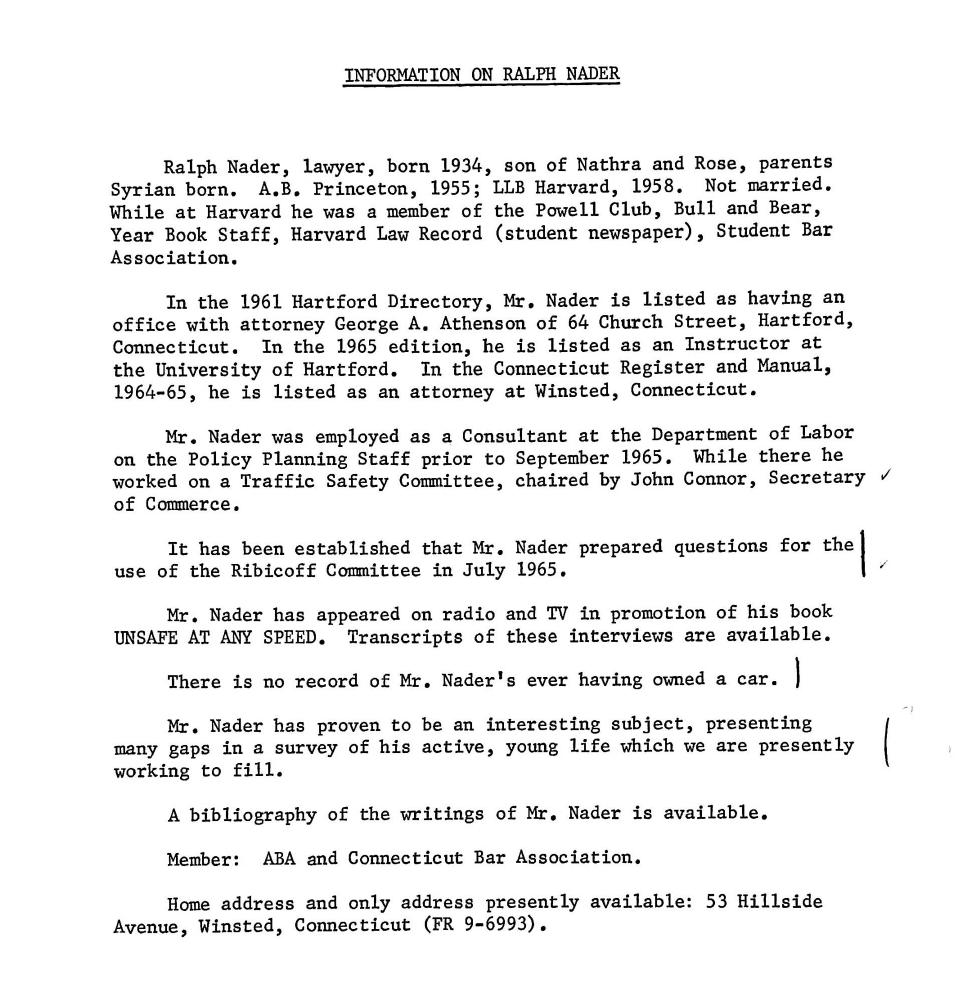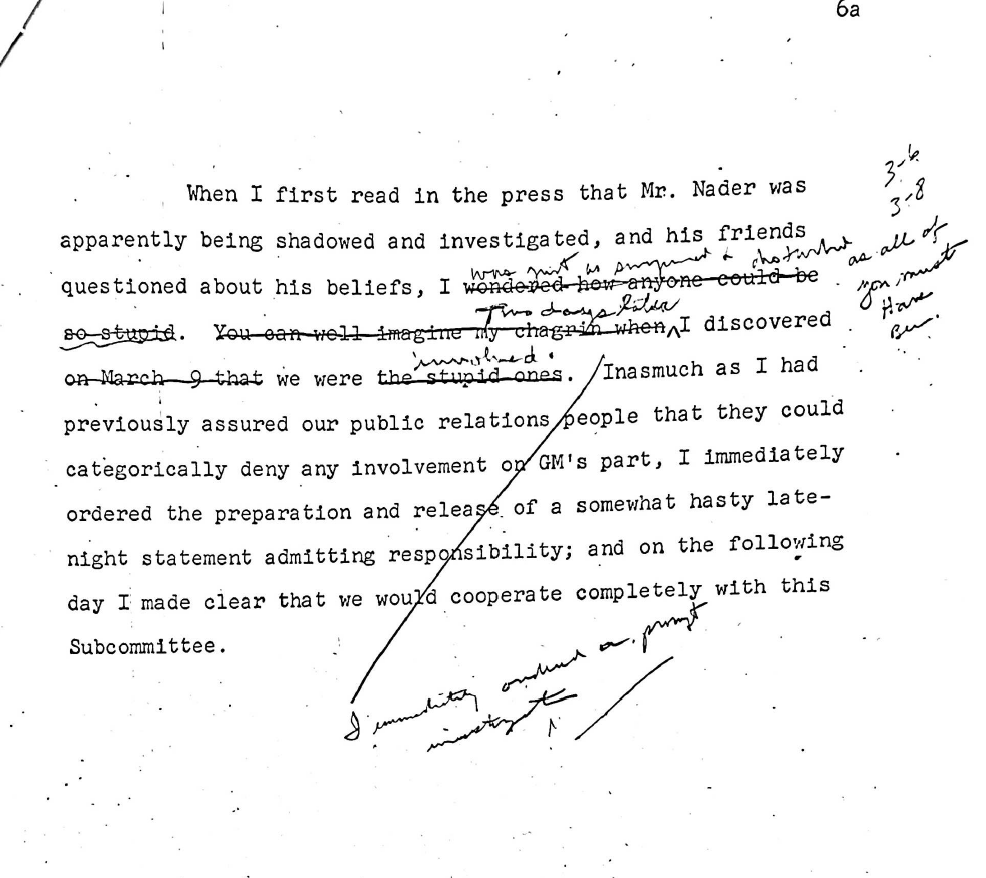... and pesticides and food and chemicals and more.
Every industry has used various propaganda techniques to help shape the public's view of it, and thus shape the regulatory and economic context it operates in. Following is a not-at-all exhaustive list of examples. If you'd like to share more, please send them our way!
Chemicals: The Legacy of Silent Spring
Even as more attention has been focused on the fossil fuel and tobacco industries for various spin campaigns, the chemical industry is often left out of the conversation. But most of the Spin Masters we've profiled on this site worked for that industry too, often during the same years in which they worked for fossil fuel and tobacco companies. In fact, they often brought chemical companies in to work alongside other industry groups against various regulations. E. Bruce Harrison, for example, who helped architect greenwashing and successfully campaigned to get the U.S. out of the Kyoto Protocol, first worked for the chemical industry. He was the PR guy for the Manufacturing Chemists Association, which is today called the American Chemistry Council. One of his first challenges was to organize an industry-wide response to the book Silent Spring, in the 1960s. And at that moment, Harrison became the first publicist to specialize in "Environmental PR." He was named the "Environmental Information Officer" for the industry group, and told to work with the PR teams at DuPont, Dow, Monsanto and Shell to craft a response. They tried every trick in the book. They worked to discredit the author, Rachel Carson, undermining her scientific credibility, painting her as an emotional woman, and possibly a lesbian. When news broke that Carson had late-stage cancer, they even accused her of being personally motivated, a quest for revenge. They put industry experts in white lab coats on every talk show to assure the public that chemicals were perfectly safe, and that human progress always required some necessary trade-offs with nature. None of it worked.
"He spoke with me at great length about that moment as being a defining moment because he felt that the big mistake had been not understanding how to communicate with the public, to convey a sense of compromise and a sense of consensus among all of interested parties," says Melissa Aronczyk, media scholar at Rutgers University and author of the new book A Strategic Nature. Aronczyk spent several hours interviewing Harrison during the last years of his life. "If you just tried to discredit existing knowledge by saying it's wrong, you'll meet with a lot of resistance. You're essentially saying to people you don't know what you're talking about or your beliefs, your ideas, your understanding is not valid, and that's no way to get people to listen to you. So what Harrison understood and what ended up defining the rest of his career was in developing public relations strategies where consensus was the order of the day. It was always about the spirit of compromise that required everyone having a voice, everyone sitting at the table to discuss environmental problems. And for Harrison, that included his clients, his clients deserved, in his eyes, a voice at the table. And to me, that's one of the biggest liabilities. That's essentially the beginning of the end as far as environmental policy in the United States is concerned, because what you have, if you always have business voices at the table, is a sense of the self-interest of business, which is always going to be at odds with the need to protect the environment."
Food: Fauxperts on Forbes
Fake experts is a technique as old as PR itself. The railroads, the fossil fuel industry, everyone has used it, but none to greater effect than the food industry, from Edward Bernays permanently attaching bacon to the American breakfast to a legion of industry-paid experts touting the benefits of pesticides, antibiotics, and genetically modified organisms. The Forbes website has been fertile ground for these fauxperts. More than a decade ago Forbes opened up its website to all kinds of columnists—CEOs trying to position themselves as thought leaders, advocates on both sides of every issue, really anyone who wanted a blog could get one, it was a numbers game with those who could deliver the most clicks getting prime placement. Jon Entine of the Genetic Literacy Project had a blog there. On it, he dismissed the dangers neonic pesticides pose to bees, and argued that soda bans might lead to more (not less) consumption of sugary drinks. Relying in part on the expertise of scientist Geoffrey Kabat, Entine also called a New York Times series on the health effects of fracking “advocacy journalism” that advanced an “anti shale gas bias.” Geoffrey Kabat is a former tobacco scientist and affiliate of the American Council on Science and Health, who was also a contributor for Forbes. Entine has always sworn up and down that he has no industry funding, but in September 2020 Bayer disclosed that the company “no longer provides financial support” to the Genetic Literacy Project...meaning it once did, despite Entine’s claims.
Fossil Fuel Industry: Astroturfing Champs
The fossil fuel industry has been using astroturfing—creating fake grassroots groups to give the appearance that the public is for or against some proposed regulation—for decades. Daniel Edelman and his firm Edelman PR were experts in forming and staffing these groups, and strategizing how to use them. "So fossil fuel industry organizations fund these fake front groups and they give these fake front groups these perfectly innocuous names like the California Drivers Alliance or the Washington Consumers for Sound Fuel Policy Group," says Christine Arena, former Edelman VP turned climate advocate. "And these groups—there are hundreds of them—are usually secretly run by lobbying organizations like those two I just mentioned are actually run by the Western States Petroleum Association, which is a top lobbyist for the oil industry. And the Western States Petroleum Association, is in turn funded by members including BP, Shell, Exxon Mobil, Chevron and Occidental, among others. So it's fake activism, it's corporate money posing as activism. And Edelman was a genius at doing that."
Their best-known example is the Energy Citizens group, which claims to be a bunch of citizens who are just worried about reliable, affordable energy, but in fact were created by Edelman and its client the American Petroleum Institute, the fossil fuel industry's trade group. In January, 2012, Energy Citizens launched a new national ad campaign in advance of the 2012 elections to try and make it sound like public support exists for increased drilling. The print and TV ads, coordinated by the Edelman PR firm, were titled "I'm an Energy Voter." They feature supposedly average people looking into the camera and saying "I vote ...for American domestic energy " and promoting the industry's goals of opening up more land to oil and gas drilling. The ads linked increasing drilling to job creation, economic prosperity and national energy security, and drive people to the website Vote4Energy.org. The homepage of the website gave no indication that Energy Citizens is a creation of the oil industry.



Guns: Personal Responsibility on Steroids

The gun industry was one of the first to use American individualism to fight against regulation. In the early 1920s, the number of shooting deaths was on the rise and public concern about the easy availability of guns in America was increasing. In 1922, the American Bar Association actually recommended shutting down all gun factories producing arms for civilians. Congressional reps on both sides of the aisle even introduced legislation that would ban the shipping or advertising of guns. States had passed gun control laws before (mostly aimed at stopping ex-slaves from forming militias in the post-Civil War South), but this was the first time federal legislation was proposed.
Colt, the largest maker of pistols for the civilian market, felt itself under siege. They fought back with a massive PR blitz. First, they conducted market research and found that the public's big issue with guns was their use in violent crimes. So they focused on separating the criminal from the gun in their hand. The real problem wasn't guns, it was criminals. Law & order was the solution, including tougher sentencing laws so there would be fewer criminals wandering the streets. And any bad guys that evaded law enforcement could be handily dealt with by all those civilians with their guns!
To make this narrative stick they had to shift people away from worrying about the bar brawls or domestic fights that turned into murders because of easy access to guns, and convince them that actually those creeping murder numbers were all because of psychotically violent strangers, hellbent on killing people. The last thing you want in the face of those murderous zombies is to be un-armed!
A lobbying group that worked with Colt began using variations of the "guns don't kill people, people kill people" slogan that's so familiar today back in 1927. One of the earliest versions of the slogan from the Colt PR people was, “it’s not the gun, it’s the man behind the gun."
Later, of course, this tactic of shifting blame to individuals was embraced by the food/bev and packaging industry (the infamous campaigns around littering) and the fossil fuel industry (the ol' carbon footprint calculator).
Automotive: GM and the Ralph Nader Caper

Most people under the age of 40, if they know Ralph Nader at all, know him as a Green Party presidential candidate back in 2000. But long before he got into politics, Nader was a lawyer and a consumer protection advocate, and he first burst onto the national scene around one issue that seems downright innocuous today: seatbelts. Nader lived on a road where car crashes were pretty common, and people often died in them. He started looking into it, realized that seatbelts were highly effective and that automotive manufacturers were cutting corners on safety, and decided to do something about it. The book Unsafe at Any Speed was published in 1965 and freaked not only the automotive industry, but all industry, out in a big way. Because the Chevrolet Corvair was a particular focus of Nader's, General Motors was particularly irked. They hired a private investigator to follow Nader around and try to dig up dirt, they even set up an attempted honeypot, sending young women to try to entrap him. None of it worked--instead Nader busted them and called them out publicly. Eventually GM execs were hauled in front of a Congressional investigation committee, publicly embarrassed and forced to apologize to Nader. So... the plan failed, but industry would continue to see Nader as a threat and target him, and over time their efforts to discredit him largely worked, painting him as a radical who was dangerous for the country.







